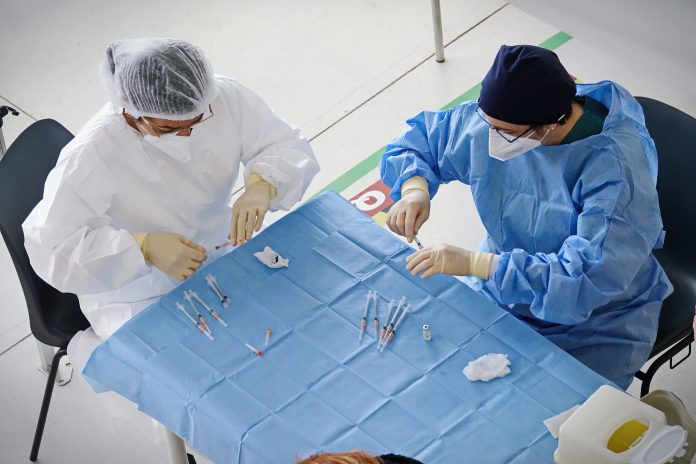SAGE reveal that in the most pessimistic scenario, a further 115,800 COVID deaths would happen by June, 2022 – but in the most optimistic ‘unlockdown’ output, the figure is 9,400 deaths
Yesterday (12 July), The Scientific Advisory Group for Emergencies (SAGE) released stats on what the imminent 19 July ‘unlockdown’ would look like – in terms of COVID hospitalisations, R numbers and deaths.
The report, reflecting on the unpredictability of several things, said: “Whilst the impact of Test Trace Isolate (TTI), mask wearing, hand hygiene, and COVID security on R is difficult to quantify, it will be vital to emphasise the importance of normalising and ensuring adherence to all measures even after “full lifting” is achieved.”
SAGE predict that in the most optimistic scenario, there will be a further 9,400 deaths by 1 June, 2022. In the most pessimistic, there will be 115,800 COVID deaths by the same date.
The much-anticipated report follows three ways of calculating to create three potential realities – pessimistic, optimistic and central. The most pessimistic calculation of how many more UK COVID deaths could happen comes from using the lowest vaccine efficacy possible and an R rate of 2.5. On the other hand, the most optimistic calculations come from using the highest possible vaccine efficacy and a low R rate of 1, even after ‘unlockdown’.
Why is vaccine efficacy unknown?
The Delta variant is now dominant in the UK – which has been found to have a generally weakening impact on vaccine efficacy.
The R rate is predicted to rise by SAGE, after all mandatory pandemic measures are lifted on 19 July – but vaccine efficacy is far more unpredictable. The UK used a mix of vaccines built to fight the original virus from Wuhan, but is now faced with variants which have evolved – learning how to be more transmissible.
For instance, the vaccines have been tested in real-terms against the Delta variant, but not wholly in clinical trials – not yet. Only the Sinovac vaccine has tested against six Variants of Concern, but it has a long way to go before Emergency Use Authorisation.
This means that there is a range of possibilities on how well existing vaccines hold up, especially against Variants of Concern which are not in the UK yet. These include the Lambda variant, first emerging in Peru in 2020, and any variant coming from a country that has low vaccination rates.
SAGE further wrote: “Preventing the further importation and spread of variants of concerns (VOC) with moderate to high immune escape properties will be critical as these could lead to future waves orders of magnitude larger than the ones experienced so far.”
Which groups are predicted to be at risk?
Whether the figure of deaths is 9,400 or 115,800, SAGE say that it will mainly be individuals “75 years and above” with both of their doses who will largely be at risk of death. The report explains that despite having both jabs, there was “high uptake of an imperfect vaccine”.
The secondary group who will face risk of death despite being double-jabbed are those aged between 50-74 years old.
Previously, SAGE released a separate report that found ethnic minorities and those who are socio-economically deprived to also be at high risk of COVID death after 19 July.











